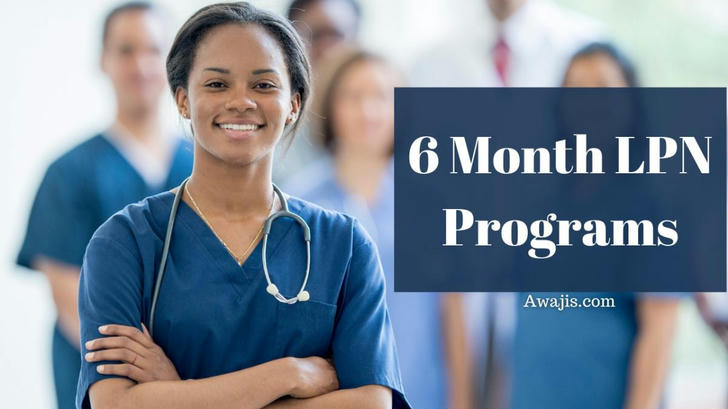Government-Supported LPN Training: Real paths, timelines, credentials and how to apply
If the goal is to become a Licensed Practical Nurse (LPN/LVN) using government-backed training or employer-supported routes, there are several realistic options in the U.S. — WIOA-backed cohorts, registered apprenticeships, veteran education benefits, workforce grants and employer tuition programs. Below is a practical, no-nonsense guide.

Government-backed routes you can use today
1) WIOA / American Job Center support (Workforce Innovation & Opportunity Act)
Local workforce boards use WIOA funding to help eligible adults (dislocated workers, low-income jobseekers, veterans in some areas) pay for career training. If a community college or training provider is on your state’s Eligible Training Provider List (ETPL), the local American Job Center can issue an Individual Training Account (ITA) to cover tuition, exam fees or related costs. Typical LPN tracks listed under WIOA are full programs or bridge cohorts that meet state approval.
How to start: Find your nearest American Job Center (CareerOneStop) and ask about WIOA eligibility and ETPL LPN programs.
2) Registered apprenticeships & employer-sponsored “earn-while-you-train” models
Some hospitals, long-term care systems and health networks run registered apprenticeships or tuition-assistance pipelines where an employer hires you (often as a nursing aide) and supports classroom time and clinical rotations. Apprentices earn wages while accumulating required hours, and employers often raise pay as milestones are completed. These programs can be attractive if you need income during training and want a direct hire path after licensure.
How to start: Search Apprenticeship.gov for nursing apprenticeships or contact local hospital HR for employer-supported LPN pipelines.
3) Veteran education channels (GI Bill, VA education benefits)
Veterans can often use GI Bill benefits or other VA education programs to cover approved LPN program tuition and related living allowances where eligible. The VA’s certifying officials can confirm whether a particular LPN program is approved for benefit use.
How to start: Talk to a VA education counselor or your school’s VA certifying official.
4) State workforce grants, community college cohorts and targeted grants
Many states run workforce-development grants targeted at high-need healthcare roles. Community colleges commonly partner with state workforce offices to run accelerated cohorts or to reserve seats for workforce participants. These programs often include career services to place graduates into local healthcare jobs.
How to start: Check your state labor/education department site and the local community college allied-health page for cohort announcements.
5) Scholarship, loan-repayment and service programs (Nurse Corps, state incentives)
Federal and state programs such as the HRSA Nurse Corps Scholarship or state loan-repayment programs may pay school costs in exchange for service in designated shortage areas. These are competitive and require service commitments but can substantially reduce the student’s financial burden.
How to start: Search HRSA Nurse Corps and your state health workforce incentives pages for eligibility and deadlines.
Program lengths
🔹Accelerated LPN bridge programs for experienced CNAs: some colleges offer hybrid bridge formats that shorten time to completion by recognizing prior clinical experience; typical accelerated bridge lengths are 9–14 months, not weeks.
🔹Standard LPN diploma programs: commonly 12–18 months depending on full-/part-time scheduling and state requirements.
🔹Registered apprenticeships: variable — often months to 1–2 years, paid while you complete required instruction and clinical hours.
Always confirm the exact clock hours and clinical hour requirements with the state Board of Nursing; those determine eligibility for the NCLEX-PN.
Accreditation & credential checklist
🔹State approval: the program must be approved by your state Board of Nursing — this is the core requirement for NCLEX-PN eligibility.
🔹Accreditation: some programs carry national accreditation (ACEN or similar), which helps with transferability and federal aid eligibility.
🔹NCLEX-PN pass rates: ask the program for recent pass rates — a strong predictor of program quality.
🔹Clinical placements: confirm how and where clinical rotations are arranged and whether the school helps place students.
How to apply — step-by-step
1.Decide your target state (licensure is state-based) and look up the state Board of Nursing’s LPN program requirements.
2.Find approved programs: search community colleges, vocational schools and Apprenticeship.gov for state-approved LPN tracks; confirm ETPL status if you plan to pursue WIOA support.
3.Pre-screen with an American Job Center if you hope to use WIOA; bring ID, proof of address and any employment documentation.
4.Contact program admissions: ask about start dates, clinical schedules, NCLEX-PN prep, tuition, and any employer ties or apprenticeship options.
5.Gather paperwork: high school diploma/GED, transcripts, immunization records, background check, TB test and any program-specific entrance assessments.
6.If veteran, contact VA to confirm benefit applicability for the chosen program.
7.Apply early — healthcare cohorts and employer-funded intakes often have limited seats.
Costs, funding mechanics and warnings
🔹Many government-supported channels help cover tuition, exam fees or provide wage support during apprenticeships — but availability and eligibility vary by locality. Expect to complete applications (WIOA intake, apprenticeship sponsor interview) and supply documentation.
🔹Watch out for programs that promise licensure after unrealistically short timelines; if a school cannot demonstrate state approval and NCLEX-PN eligibility, walk away. Also read employer-tuition agreements carefully for any required post-graduation service commitments.
Quick tips to improve your odds
🔹If you’re a CNA, collect documentation of clinical hours and references — this can speed bridge admission.
🔹Earn short supporting credentials now (BLS/CPR, basic life support, patient-handling certifications) to strengthen your application.
🔹If you need income while training, prioritize registered apprenticeships or employer-sponsored pipelines that pay wages during study.
Bottom line
Becoming an LPN through government-supported routes is realistic, but it’s not instant. Legitimate paths require classroom learning, supervised clinical hours and NCLEX-PN preparation — expect months, not weeks. Use your local American Job Center, Apprenticeship.gov and state Board of Nursing as first stops to find approved programs, check funding options, and verify timelines.
WIOA-Eligible Training Program Finder
Licensed Practical and Licensed Vocational Nurses
